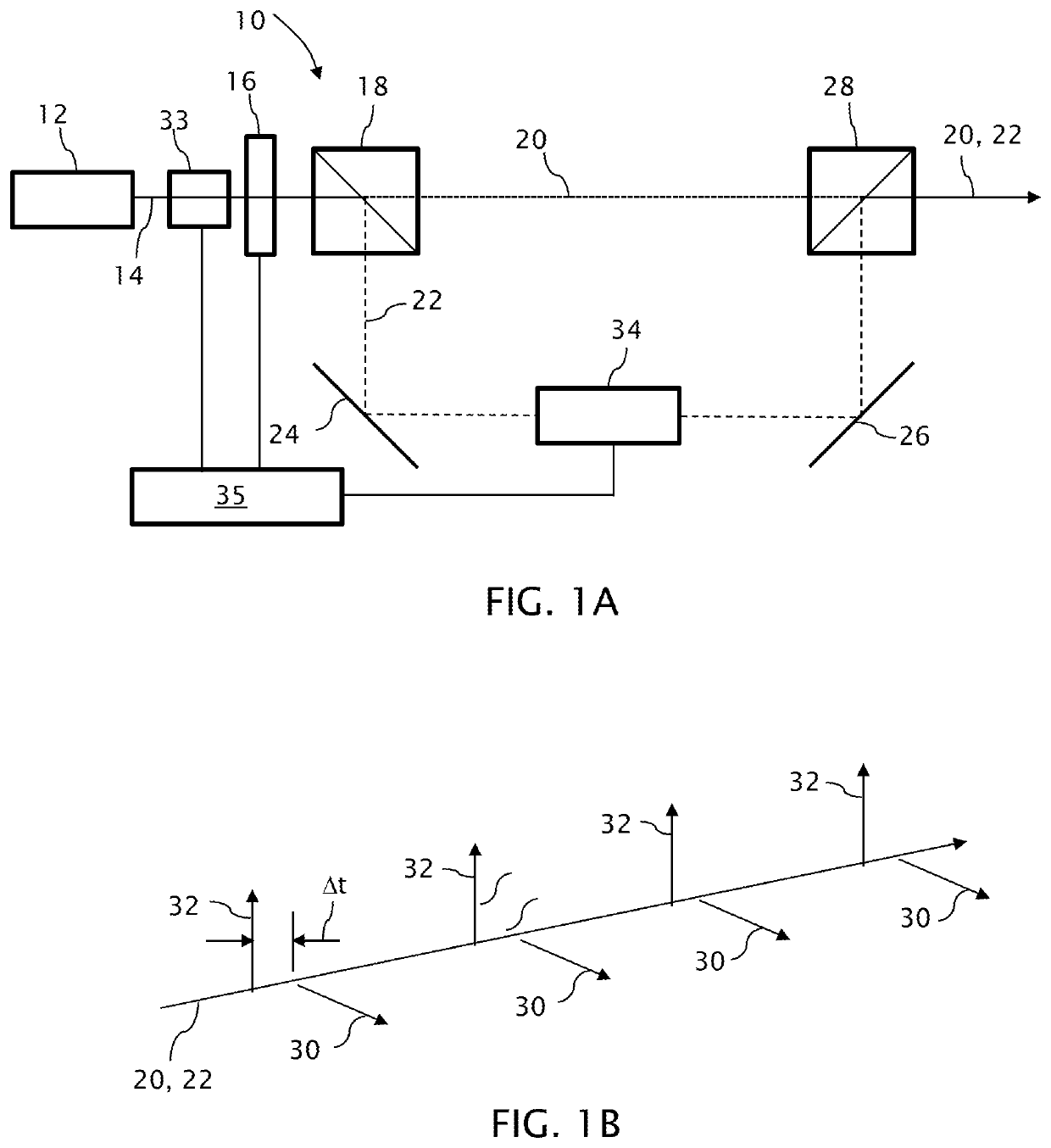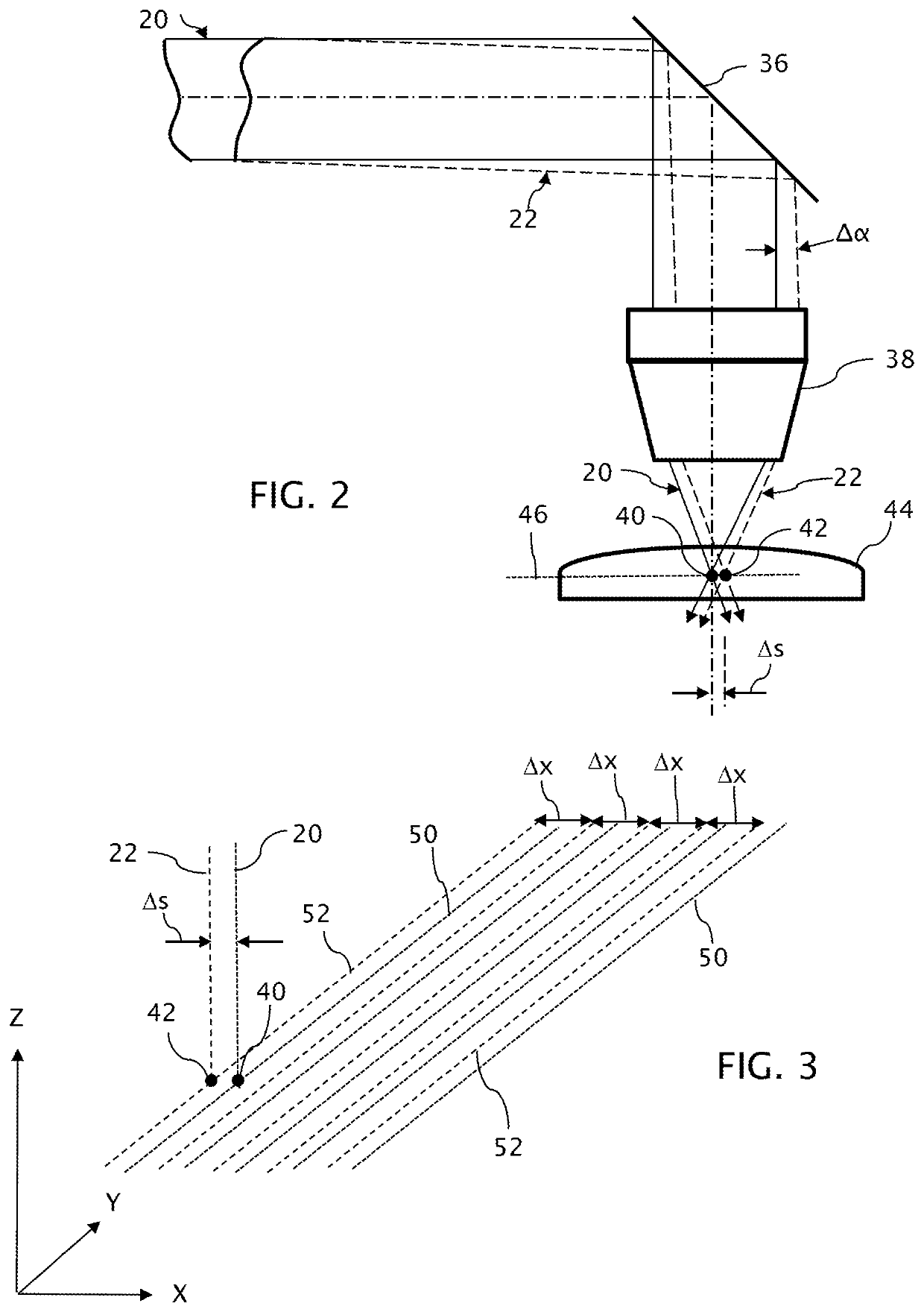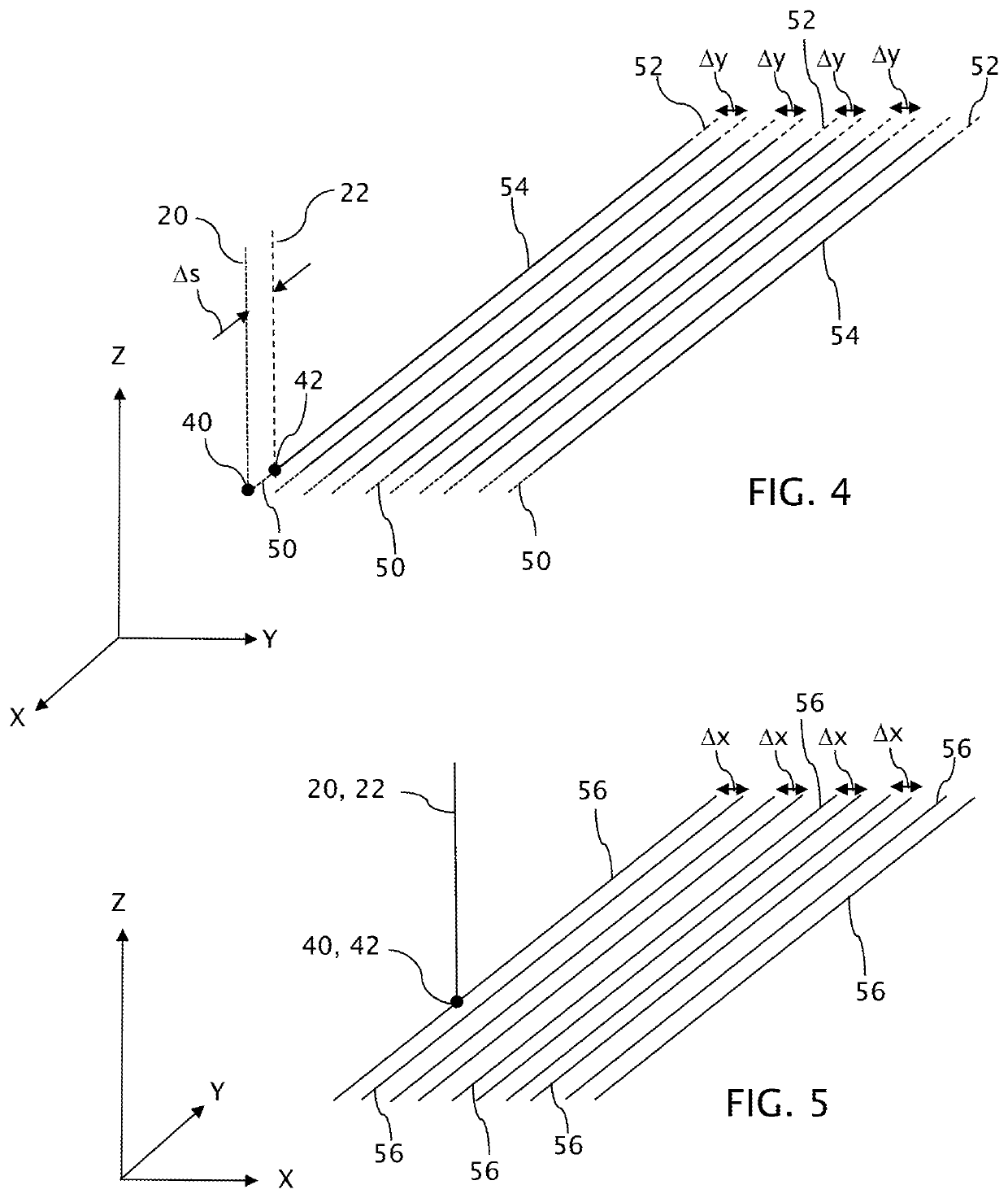Beam multiplexer for writing refractive index changes in optical materials
a beam multiplexer and optical material technology, applied in the field of pulsed laser to modify the refractive index of optical materials, can solve the problems of limited speed and efficiency with which refractive index structures can be written into optical materials, and achieve the effects of increasing the speed at which regions are scanned, improving speed and efficiency, and increasing the speed of refractive index changes
- Summary
- Abstract
- Description
- Claims
- Application Information
AI Technical Summary
Benefits of technology
Problems solved by technology
Method used
Image
Examples
Embodiment Construction
[0026]A beam multiplexer 10 as envisioned for one or more embodiments is diagramed in FIGS. 1A and 1B. A laser source 12 outputs a collimated substantially linearly polarized beam 14, whose polarization axis is rotated by a half-wave plate 16 to an orientation substantially at 45 degrees to the orthogonal polarization axes of a first polarization beamsplitter 18. The laser source 12 can be fashioned as mode-locked Ti:Sapphire laser (e.g., a Spectra-Physics Ti:Sapphire oscillator such as MaiTai-HP available from Spectra-Physics, a Newport company, in Santa Clara, Calif.) pumped by a frequency-doubled Nd:YVO4 laser. The laser can generate, for example, a succession of pulses of up to 3 W average power, a 110 fs pulse width, and an 80 MHz repetition rate or up to 1 W average power, a 160 fs pulse width and an 80 MHz repetition rate at around 400 nm frequency-doubled wavelengths. Of course, other lasers can be used or optimized for use with writing refractive index changes into differen...
PUM
| Property | Measurement | Unit |
|---|---|---|
| pulse energy | aaaaa | aaaaa |
| pulse energy | aaaaa | aaaaa |
| wavelengths | aaaaa | aaaaa |
Abstract
Description
Claims
Application Information
 Login to View More
Login to View More - R&D
- Intellectual Property
- Life Sciences
- Materials
- Tech Scout
- Unparalleled Data Quality
- Higher Quality Content
- 60% Fewer Hallucinations
Browse by: Latest US Patents, China's latest patents, Technical Efficacy Thesaurus, Application Domain, Technology Topic, Popular Technical Reports.
© 2025 PatSnap. All rights reserved.Legal|Privacy policy|Modern Slavery Act Transparency Statement|Sitemap|About US| Contact US: help@patsnap.com



